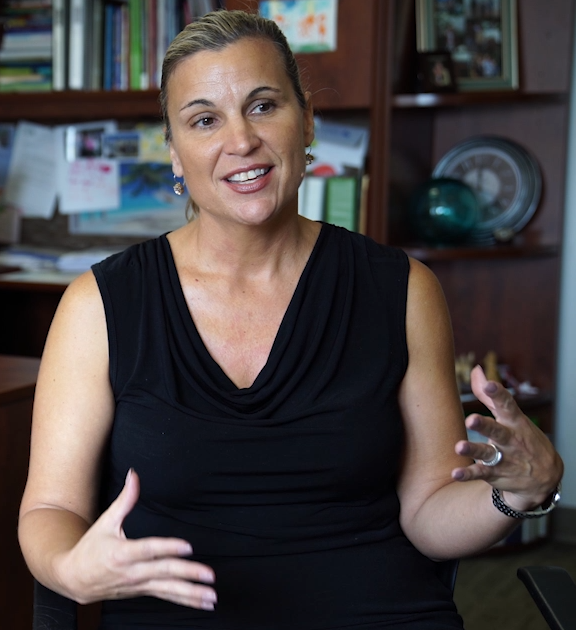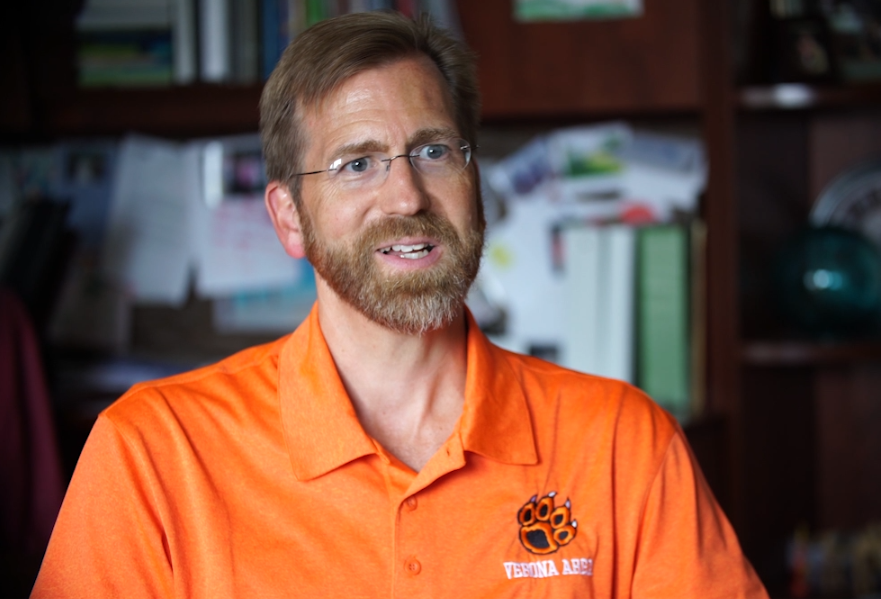Supports for Continuous School and System Improvement -- and Preliminary ESSA/IDEA Identificationsby Wisconsin Department of Public Instruction Staff
What Supported Continuous Improvement Looks LikeVerona, along with the Middleton-Cross Plains School District, is working with the DPI, the local cooperative educational service agency (CESA 2), and the Wisconsin RTI Center on a project in which “linked teams” are improving the districts’ equitable multi-level systems of support. The linked teams model has people at local, regional, district, and state levels collaborating closely to ensure effective implementation -- so evidence-based improvement strategies benefit students as intended. Burgos observes that people in education don’t always feel connected to other levels of the system. The disconnect makes everyone’s job harder -- especially teachers, she thinks, since they wind up carrying a bigger burden. “Sometimes teachers think of administrators as ‘other,’ sometimes we think of DPI as ‘other.’ And what we’re seeing is, it’s all about us coming together to improve conditions for teachers and implement things so our students benefit.” Another benefit of close collaboration is a feedback loop from policy to practice: we at the state level improve our work by gathering observations of how our efforts play out in schools or classrooms. With linked teams, the relationship between the state and district becomes “synergistic,” explains Emmet Durchee, Verona’s director of student services. “We're both giving, and both supporting, and both benefiting.” How to Access Supports for Continuous ImprovementDPI’s new supports for continuous improvement invest in linked teams and focus on proven approaches. We can ease the burden for our colleagues by functioning as a coherent educational system. To function as a coherent system requires not only good communication channels, but also whatever actions are needed to support professionals at the next level of the system -- thereby multiplying the impact of each other's improvement efforts. Our understanding of how we work together as a coherent system is described at the new Continuous Improvement section of our website. With this same aim of promoting coherence in the system, we created the new Technical Assistance Network for Improvement (TA Network) by consolidating and coordinating services we offer through partners at cooperative educational service agencies (CESAs) and the Wisconsin RTI Center. The TA Network now offers -- at no cost or low cost to all districts -- supports like professional learning and technical assistance. Supports are focused around our new, comprehensive rubric for continuous improvement (see the draft rubric here). To get the ball rolling, district staff should contact their CESA’s designated TA Network contact. Also, a number of professional development opportunities previously offered separately by the DPI, the Wisconsin Association of School District Administrators (WASDA), Association of Wisconsin School Administrators (AWSA), and the CESAs are now coordinated under the unified banner, Leading for Learning: Achieving Educational Equity. This statewide professional learning series offered for teams addresses continuous improvement, equity, educator development, and other relevant topics. Please join us June 26-28 in Madison for the kickoff to the 2019-2020 learning series. Continuous Improvement and Preliminary IdentificationsWe’ve learned from districts that continuous improvement is both more manageable and more impactful when districts and schools use a single continuous improvement process for as many requirements as possible, with linked improvement plans at all levels. To make this possible, we have merged into a single process the preliminary identifications and supports relating to Title I and IDEA (under the Every Student Succeeds Act, ESSA, and the Individuals with Disabilities Education Act, IDEA). Additionally, if your school or district has a preliminary identification, we encourage you to take this opportunity to use or build on successful continuous improvement efforts you are already engaged in, such as Educator Effectiveness. You can utilize your current, or start a new, continuous improvement cycle. In our new, flexible approach, districts and schools identified in the final identifications will be required to demonstrate they are engaged in continuous improvement -- with some specific components -- that addresses systemic issues. For all schools, we recommend an improvement process that improves existing systems and changes adult practice to help students. To move the needle, the improvement process -- in addition to being linked to other existing plans -- has to include important elements like a comprehensive needs assessment to identify root causes, and a plan that specifically addresses those. Our step-by-step Timeline of Recommended Actions for Improving Achievement and Closing Gaps shows you what this might look like.
Students occupy the top level of our visual showing how all levels of the education system can support each other. Melissa Moe, an educational consultant at CESA 11, says, “As someone who has worked with schools and districts under both Title I and Special Education, I can see how joint notification and improvement plans will make it easier for local educators to focus on the hard work of making a difference for kids.” That’s the idea - coordination and coherence make it easier for all of us to help students. More information is available at our Continuous Improvement web section, https://dpi.wi.gov/continuous-improvement. (The “linked teams” project is described in a forthcoming article in our DPI-ConnectEd newsletter.)
Read more at:
Elementary Edition - Secondary Edition - District Level Edition
|

 A new vision is driving how we at the Department of Public Instruction (DPI) work with schools around federal laws. Administrators in a related project see great promise as they experience this vision made real. “Super exciting” were the words of Laurie Burgos, director of bilingual programs and equity at the Verona Area School District.
A new vision is driving how we at the Department of Public Instruction (DPI) work with schools around federal laws. Administrators in a related project see great promise as they experience this vision made real. “Super exciting” were the words of Laurie Burgos, director of bilingual programs and equity at the Verona Area School District.
